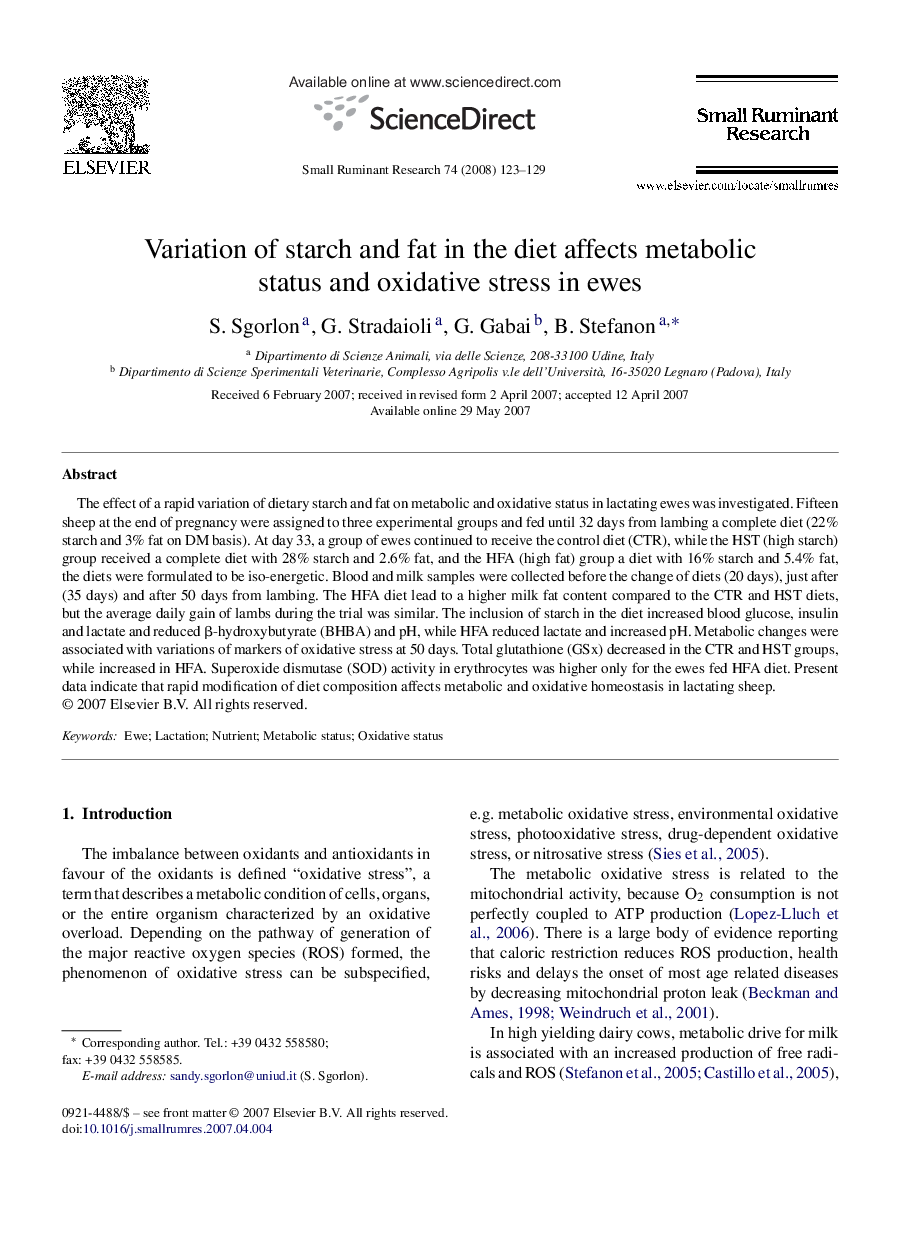| Article ID | Journal | Published Year | Pages | File Type |
|---|---|---|---|---|
| 2457956 | Small Ruminant Research | 2008 | 7 Pages |
Abstract
The effect of a rapid variation of dietary starch and fat on metabolic and oxidative status in lactating ewes was investigated. Fifteen sheep at the end of pregnancy were assigned to three experimental groups and fed until 32 days from lambing a complete diet (22% starch and 3% fat on DM basis). At day 33, a group of ewes continued to receive the control diet (CTR), while the HST (high starch) group received a complete diet with 28% starch and 2.6% fat, and the HFA (high fat) group a diet with 16% starch and 5.4% fat, the diets were formulated to be iso-energetic. Blood and milk samples were collected before the change of diets (20 days), just after (35 days) and after 50 days from lambing. The HFA diet lead to a higher milk fat content compared to the CTR and HST diets, but the average daily gain of lambs during the trial was similar. The inclusion of starch in the diet increased blood glucose, insulin and lactate and reduced β-hydroxybutyrate (BHBA) and pH, while HFA reduced lactate and increased pH. Metabolic changes were associated with variations of markers of oxidative stress at 50 days. Total glutathione (GSx) decreased in the CTR and HST groups, while increased in HFA. Superoxide dismutase (SOD) activity in erythrocytes was higher only for the ewes fed HFA diet. Present data indicate that rapid modification of diet composition affects metabolic and oxidative homeostasis in lactating sheep.
Related Topics
Life Sciences
Agricultural and Biological Sciences
Animal Science and Zoology
Authors
S. Sgorlon, G. Stradaioli, G. Gabai, B. Stefanon,
